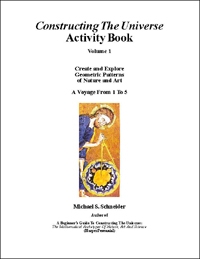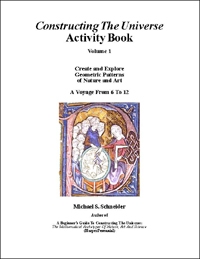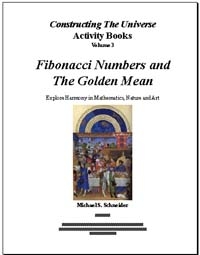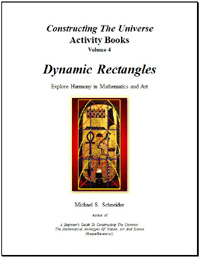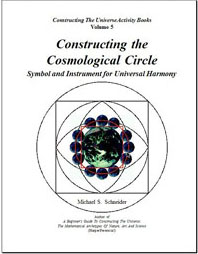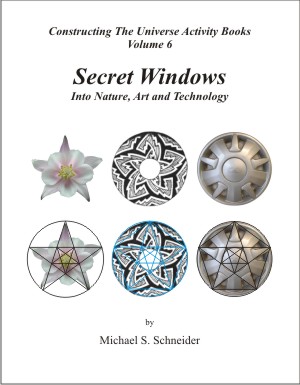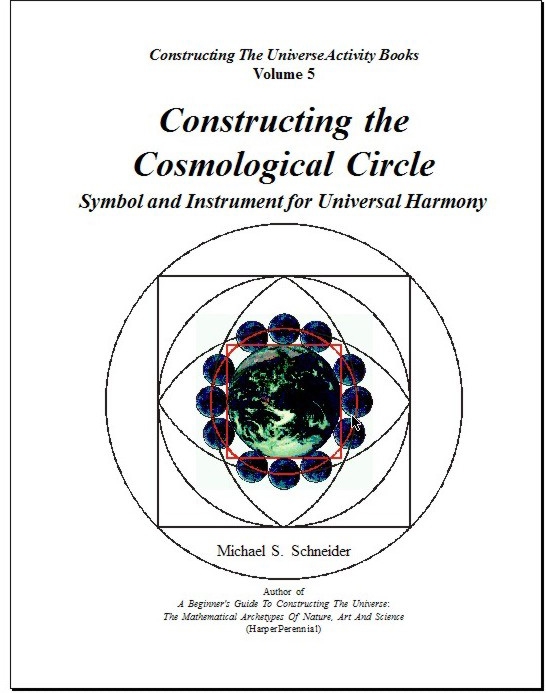

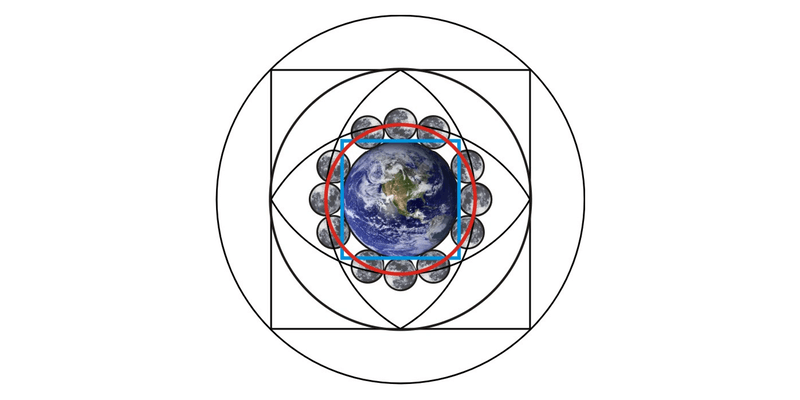
The Cosmological Circle is a geometric diagram that has appeared in the arts, crafts, architecture, religion and literature of cultures around the world, and is associated with their golden ages. Because it's the visual representation of the harmony naturally inherent in the structure of the numbers 1 through 12, it encodes the ideal patterns and proportions toward which nature's forms strive. It has been used as a symbol of universal harmony because it represents the complete order of the universe and thus is a microcosm appearing in the designs of cosmic temples and sacred spaces worldwide. It served as as an eternal standard of reference, a pattern and instrument of statecraft for civilizations which were "cosmologically ordered societies" seeking to attract to their citizens happiness, blessings, justice and prosperity. Its proportions were used as an intelligent model for integrating weights and measures with human dimensions, and for sanctifying the Earth with sacred architecture. Its dimensions are described as the Heavenly City described in The Book of Revelation, seen in the plan of the Buddhist Brobodur temple, Stonehenge, Glastonbury, and described as Plato's ideal city Magnesia. Its central "squared circle" plan is also found in the sizes and relationships among the Earth, Sun and Moon. No one invented it - it's just the way that numbers naturally harmonize, providing the ideal towards which nature strives and humans have designed art and society.




Constructing the Cosmological Circle teaches how to construct the diagram by the traditional geometric method using a compass and straightedge. The book also provides the background necessary to appreciate its geometry, symbolism, and appearances in art, architecture and literature around the world.
Artists and architects will want to see how this model of harmony has been used in the past.
Readers interested in symbolism and philosophy will find a key to understanding traditional wisdom teachings.
This book is primarily based on the work of John Michell who has explored and written about the New Jerusalem Diagram and Cosmological Circle for over thirty years.
The book is organized in five sections. The first, From Chaos To Cosmos considers some ancient creation myths which describe mathematical aspects to the birth of the universe. Studying nature's order, its "outbursts of truth" reveals first hand how the universe is organized and unfolds. Today, science, religion and mythology present differing views, although this wasn't always the case. All societies organize and comport themselves in accord with the cosmology they perceive. In the past intentionally planned "cosmologically ordered societies" were formed. They're sometimes recognized by their deep interest in particular numbers which recur in their religion, literature, statecraft and the proportions of their monuments and buildings. They did this to resemble as closely as possible the harmony they perceived in nature's numbers at the heart of the universe and in themselves.
The second section, called Geometer's Heaven and Earth looks at two shapes central to the sacred art, architecture and philosophy of cultures where universal order was a main interest. These shapes are the circle and square, worldwide symbols of eternally existing heavenly perfection and its transitory, material approximations. Circle and square are predominant in the Cosmological Circle diagram so we benefit by understanding their geometry and symbolism.
Of all the ways that the circle and square interact, the most interesting is the "squared circle" where they have virtually the same perimeter or area. This next section, Squaring The Circle, looks at the geometry and history of this seeming impossibility. Symbolically, a squared circle signifies the meeting of Heaven and Earth, the ideal and the actual, which by definition are different. Cosmologically ordered societies often used squared circle geometry in their sacred architecture to indicate that "Heaven and Earth meet here". By looking at various examples we'll gain insight into the geometry, history and symbolism of the squared circle at the center of the Cosmological Circle construction.
The next section, Construct the Cosmological Circle is the heart of this book. It guides the reader along illustrated step-by-step directions for constructing the Cosmological Circle with a compass and straightedge. It's steps are well worth pondering for the way they integrate different shapes and their proportions into one harmonious whole. Artists and architects may use the construction for creative projects. Some people will approach it as a meditative process and symbol.
The final section, called The Number Canon removes the geometric mask and looks into the numbers at the heart of the Cosmological Circle. The way the twelve numbers combine and organize into an all-encompassing whole was the model for most of the ancient world as a microcosmic representation of the harmonious universe. It was used as a standard for defining relationships among weights, measures, music and the proportions of sacred art and architecture. This section looks at some of the interesting numbers in the Cosmological Circle and their recurring appearances in various cultures and in nature.
A Bibliography lists some books and web pages useful for further exploration of the Cosmological Circle in mathematics, art and philosophy.
The book is thoroughly illustrated with many quotations. It is printed single-sided, 115 pages.
Table Of Contents
Introduction 4
From Chaos To Cosmos 11
Cosmogeny and Cosmology 11
Chaos and Order 13
Divine Geometer 15
Ma'at 18
Cosmologically Ordered Societies 20
Geometer's Heaven and Earth 28
Circle and Square 28
The Heavenly Circle 29
The Earthly Square 32
Heaven And Earth Together 33
Square Mediates Between Circles 36
Squaring The Circle 38
Pursuing the Impossible 38
Earth And Moon Square the Circle 42
Stonehenge 44
The Great Pyramid 46
The Pantheon 48
Native American Kivas 49
Borobudur Temple 51
Cosmati Pavement of Westminster Abbey 52
Alchemical Fusion 53
Construct the Cosmological Circle 55
Step-by-step
The Number Canon 81
Traditional Twelve 83
Highly Composite Numbers 85
Rhythms of Human and Celestial Bodies 87
The New Jerusalem Grid 88
Seven Hundred Twenty 91
Celestial Dimensions 98
Heavenly Cities 104
Five Thousand Forty 107
Perimeters and Areas 109
Bibliography 115
Overall description of the Activity Books
Click on any cover to see its Table of Contents:
